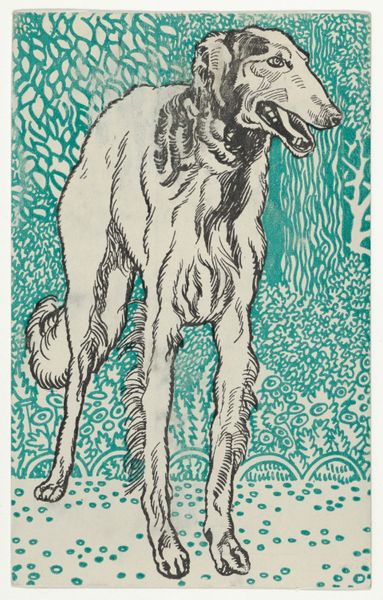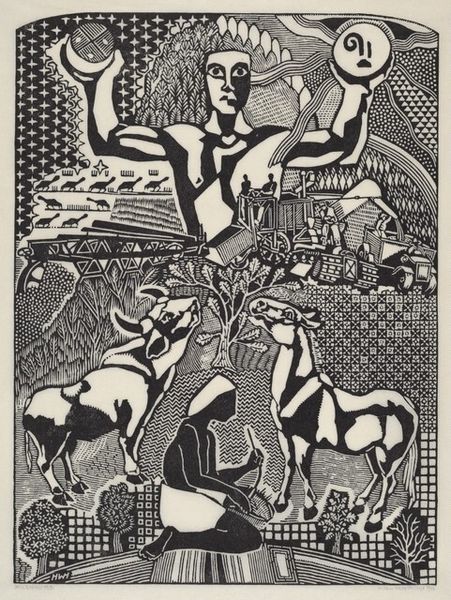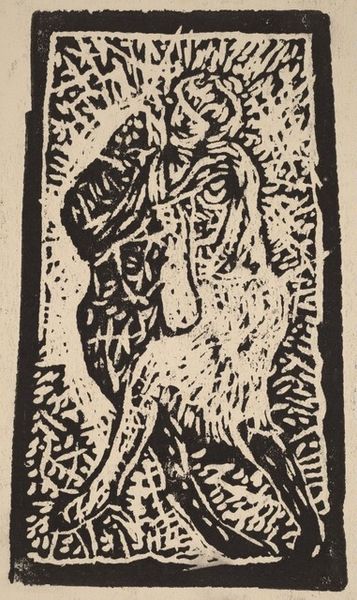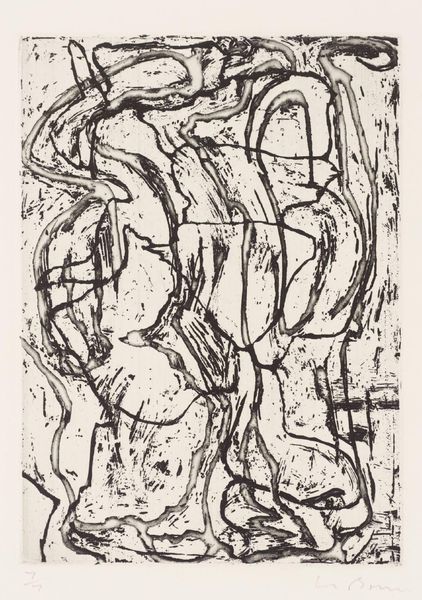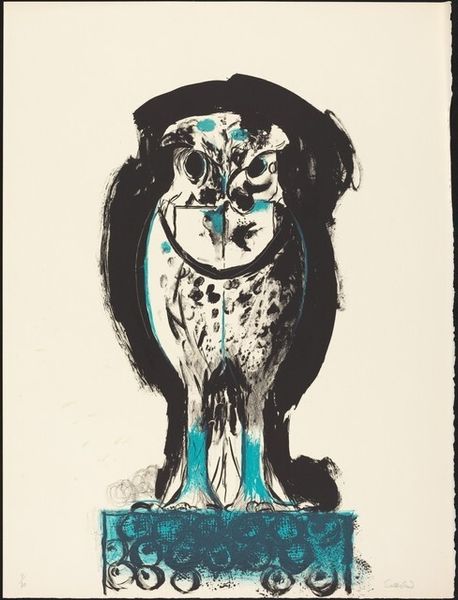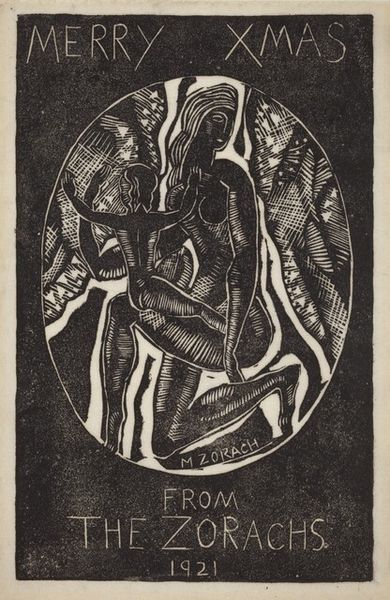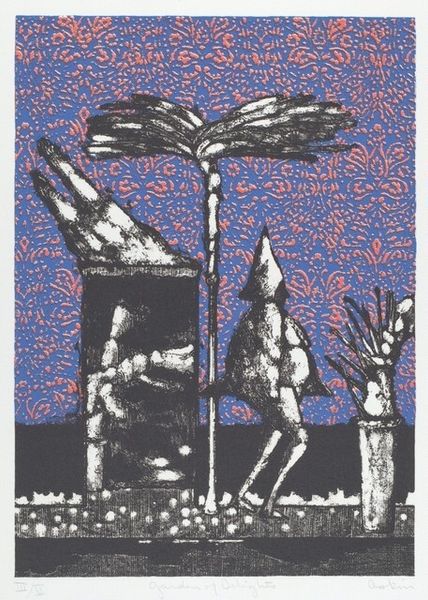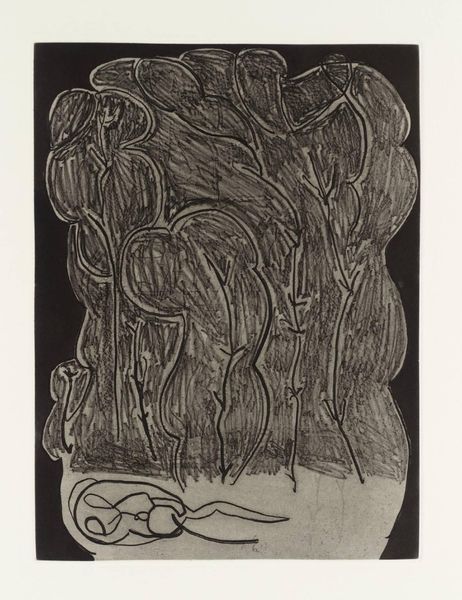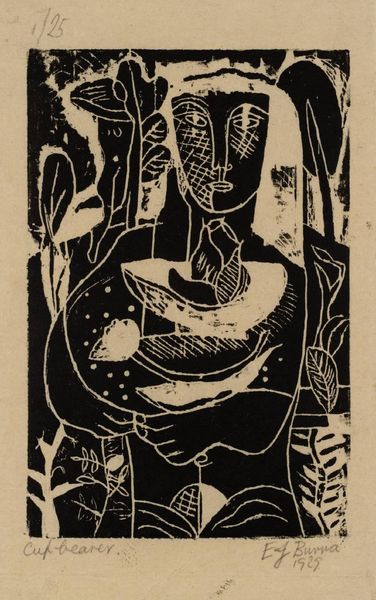
drawing, graphic-art, print, linocut, woodcut
#
portrait
#
drawing
#
graphic-art
#
art-nouveau
#
animal
# print
#
linocut
#
ink line art
#
linework heavy
#
linocut print
#
woodcut
Copyright: Public Domain: Artvee
Editor: We’re looking at "Greyhound," a 1912 linocut print by Moriz Jung. It’s striking! The dog has such a regal and alert posture, but the color palette is unusual. What historical symbols or ideas do you connect with here? Curator: What immediately catches my eye is the stylistic combination of the natural and the abstract. Jung clearly understood the essence of the greyhound – its noble stance, lean musculature, the focused gaze. Do you see how this is set against a background that's both pastoral and strangely patterned? It’s reminiscent of tapestries. Editor: Yes, it feels a little bit like the Garden of Eden, with almost psychedelic trees. Curator: Precisely! In Art Nouveau, the natural world is rarely depicted literally, so we might ask: what's being evoked here? Greyhounds have historically been symbols of aristocracy, speed, and loyalty, all traits valued within the Austro-Hungarian Empire at the time. Could Jung be using the dog to evoke the image of an idealized yet stylized, perhaps even slightly destabilized, aristocratic order on the cusp of war? Editor: That’s fascinating! I wouldn't have picked up on that without knowing more about the artistic context. The pattern does read as a symbolic shorthand. Curator: Visual languages speak volumes once we learn how to listen. In this piece, Jung asks us to see more than just a dog; he invites us to interpret a complex tapestry of social symbols. Editor: Thanks. I will remember this approach for the next time I see patterned backdrops. Curator: Likewise, noticing your fresh observation is a delight.
Comments
No comments
Be the first to comment and join the conversation on the ultimate creative platform.
